Is Your Fixer-Upper a Mistake? 1 in 5 U.S. Homeowners Said Yes

The idea of transforming a bargain fixer-upper has long been a part of American homeownership, but new research suggests that this can come with a costly reality check.
A recent Zillow study highlighted the “nostalgia tax”: remodeled homes now sell for 3.7% more on average than expected, while listings labeled “fixer-upper” are discounted by 7.3% compared to similar properties.1 In short, today’s market increasingly rewards move-in ready homes.
Our survey of more than 2,000 U.S. homeowners explores the trade-offs between buying a fixer-upper vs. a move-in ready home. The findings reveal a strong preference for convenience — and growing regret among fixer-upper buyers — as home costs continue to rise.
Key takeaways
- 62% of homeowners bought a move-in-ready home, while only 28.1% bought fixer-uppers, showing a strong preference for turnkey homes.
- Across all home types, 51% love the area it’s in, suggesting that features like walkability, school districts, and proximity to family or work is more important than the price (50%) and the features of the home itself (44%).
- More than 62% of fixer-upper owners spend upwards of $6,000 per year on renovations, increasing monthly expenses.
- Nearly all fixer-upper buyers (98%) have made repairs since moving in; more than 48% spend more than $6,000 annually on those repairs.
- If given the chance to start over, 23% of fixer-upper owners would choose a move-in ready home instead, suggesting the labor and cost outweigh the value.
Renovation costs overshadow initial savings from buying a fixer-upper
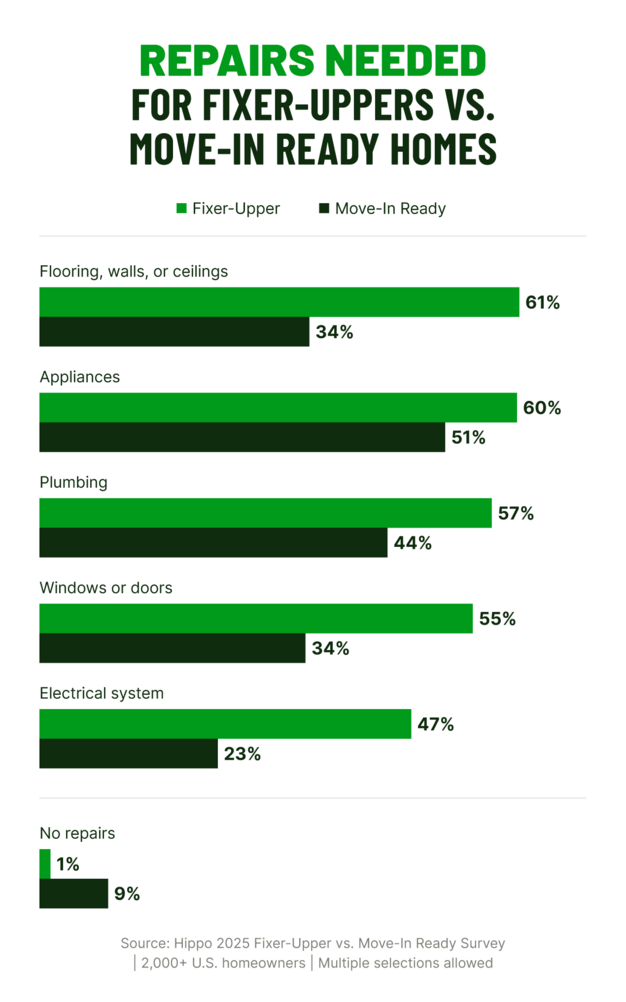

Across generations, buyers prefer move-in ready homes

The preference for move-in ready homes is nothing new
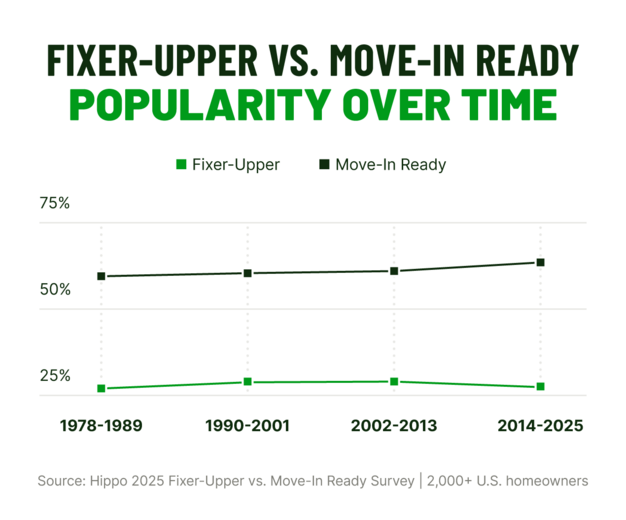
General considerations when buying a home
- Closing price: Fixer-uppers tend to list for less, making them potentially more accessible to buyers with less home equity.
- Long-term cost: Lower than average purchase prices could mask unanticipated renovation and repair expenses. Completing a home inspection can help solidify long-term cost projections before completing a sale.
- Time and effort: Not everyone has the bandwidth to manage renovations, including buyers with kids, pets, or demanding careers.
- Risk tolerance: Homeowners with a higher risk tolerance may be open to unanticipated projects that arise from buying a fixer-upper, allowing them to plan and adapt as renovations and repairs arise.
- Emotional cost: Due to the multiple projects that come with the territory, many fixer-upper buyers report wishing they’d done things differently, while move-in ready buyers more often express confidence in their choice.
Fixer-upper | Move-in ready | |
|---|---|---|
Price | 51% | 50% |
Location | 45% | 55% |
Home features (e.g., backyard, patio, etc.) | 44% | 46% |
Household loves the home | 36% | 38% |
Potential | 36% | 23% |
Sentimental value | 29% | 22% |
Get the best protection for your home
FAQ: Fixer-upper vs. move-in ready homes
Is it better to buy a fixer-upper or a move-in ready home?
What is a move-in ready home?
When is it time to walk away from a fixer-upper?
What is the most expensive thing to fix on a house?
Methodology
External sources:
- Zillow. (2025, February). The end of the fixer-upper: Remodeled homes sell for the highest premiums
- Realtor.com. (2025, September) Roll Up Your Sleeves: An In-Depth Look at Fixer-Uppers on the Market
- This Old House. (2025, May) How Much Does Appliance Repair Cost?
- Home Guide. (2025, July). How much does it cost to repair floors?
- Mr. Handyman. (2025, September) How Much Does Drywall Repair Cost?
- This Old House. (2025, May) How Much Does it Cost to Repair Drywall?
- HVAC. (2023, July) HVAC Repair Costs
- U.S. News. (2025, July) 2025-2030 Five-Year Housing Market Predictions
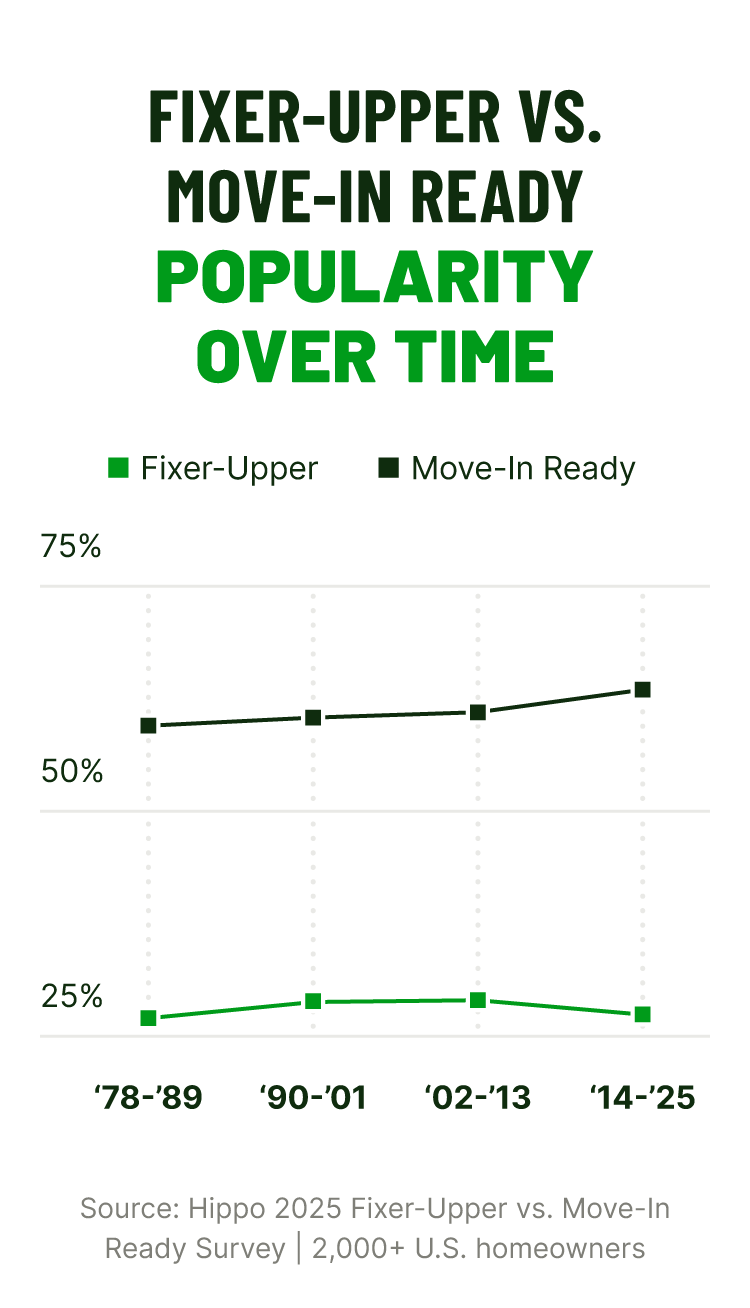
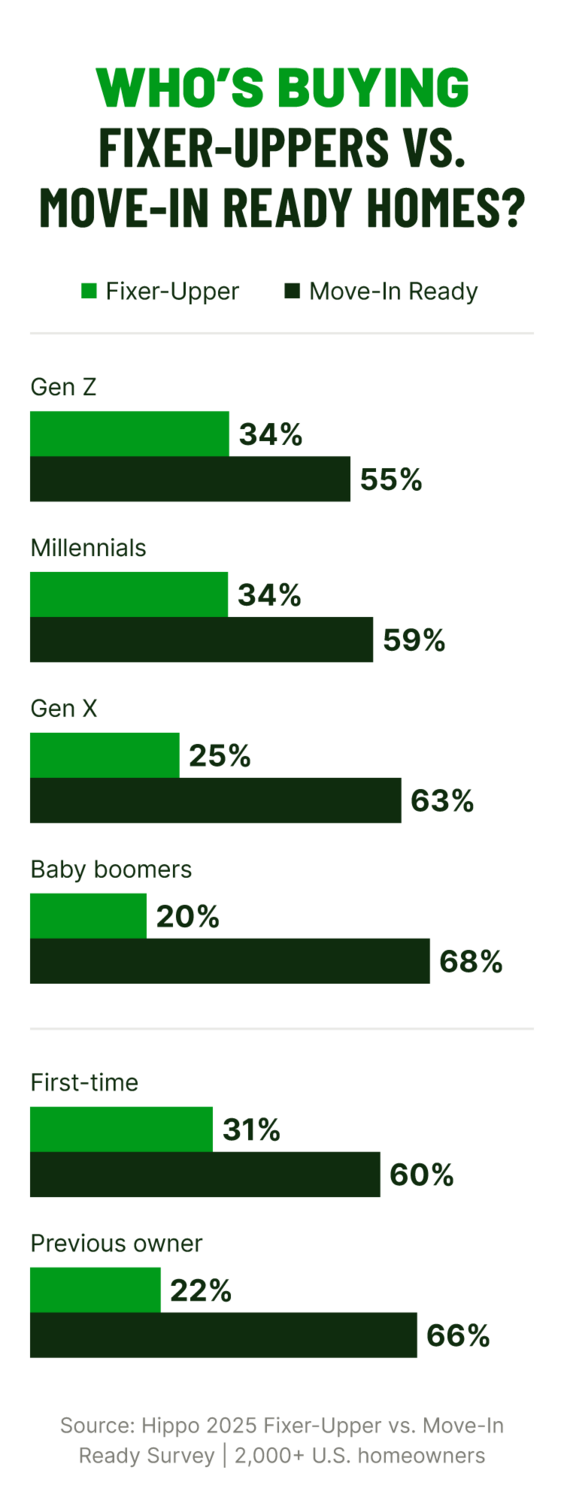

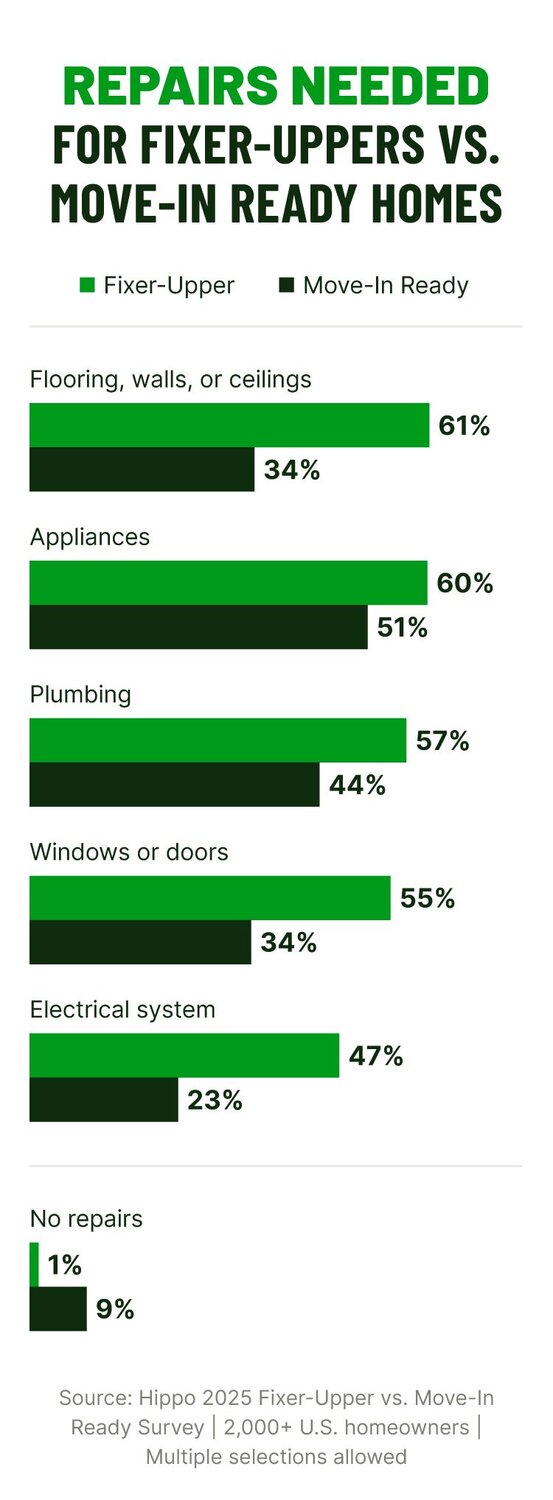



![A graph of average home repair costs, highlighting the most common repairs for fixer-uppers and move-in ready homes.]](https://cdn.builder.io/api/v1/image/assets%2F87a865fc472c4b69863d5e7f8aa60d5c%2F4ce147cbc3634e71bde3d680ffa79686?width=919)
Related Articles
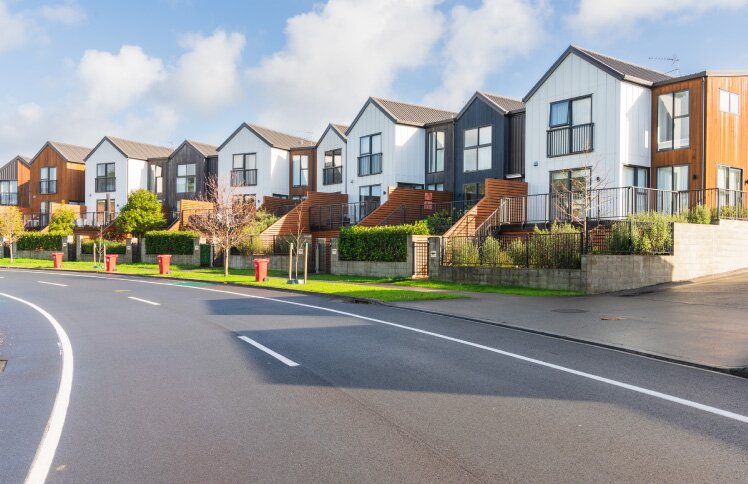
Future of American Suburbs: Redefining Where (and How) We Live

5 Costly New Homeowner Maintenance Mistakes (and How to Fix Them)
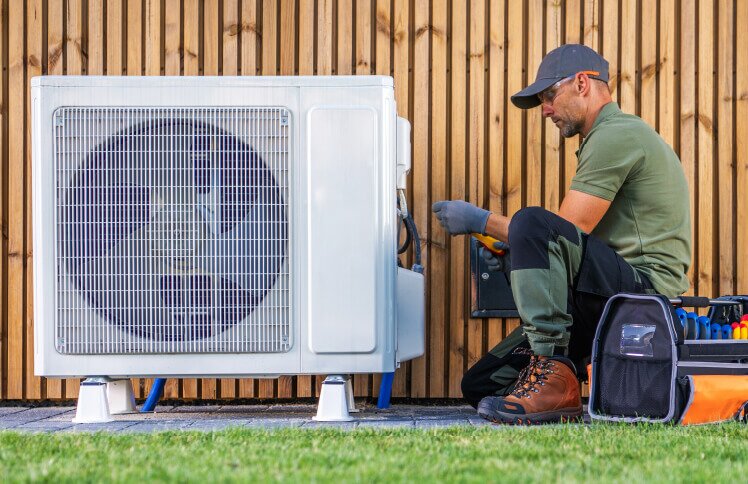
The 9 Most Expensive Home Repairs to Watch Out for in 2025

When Is the Best Time To Buy a House? Expert Tips for Homebuyers

Report: Where Homeowners Turn for Maintenance Advice in 2024

